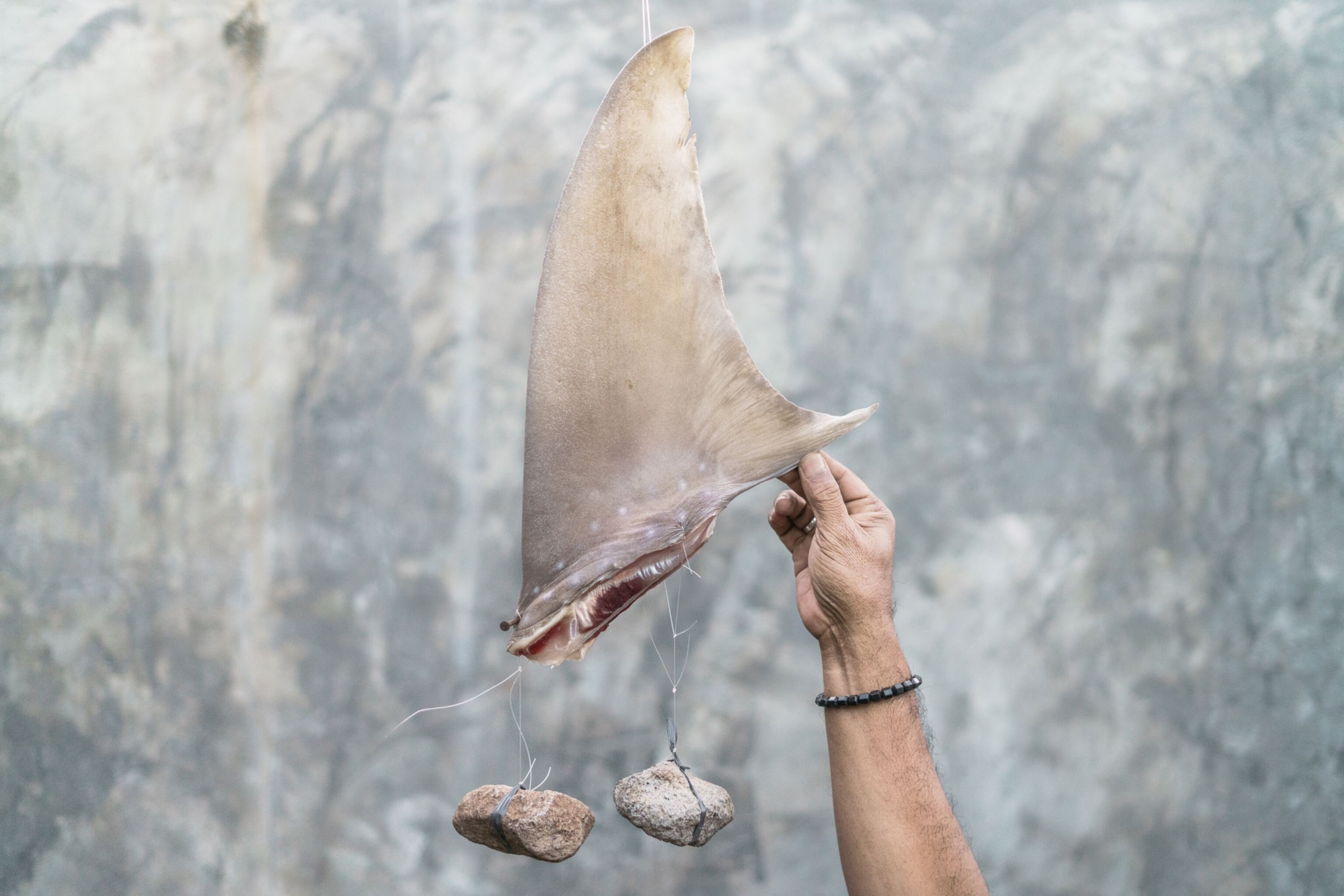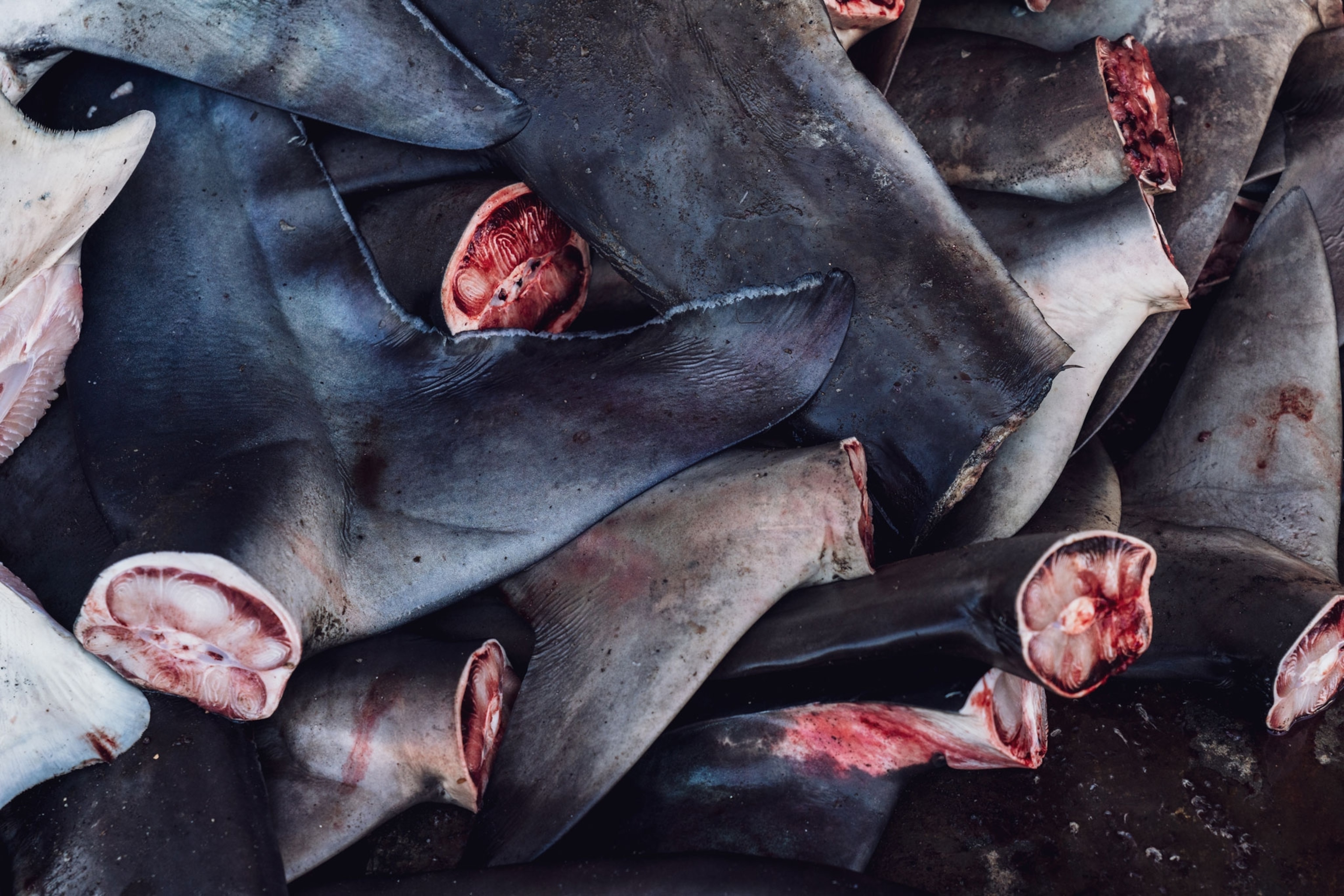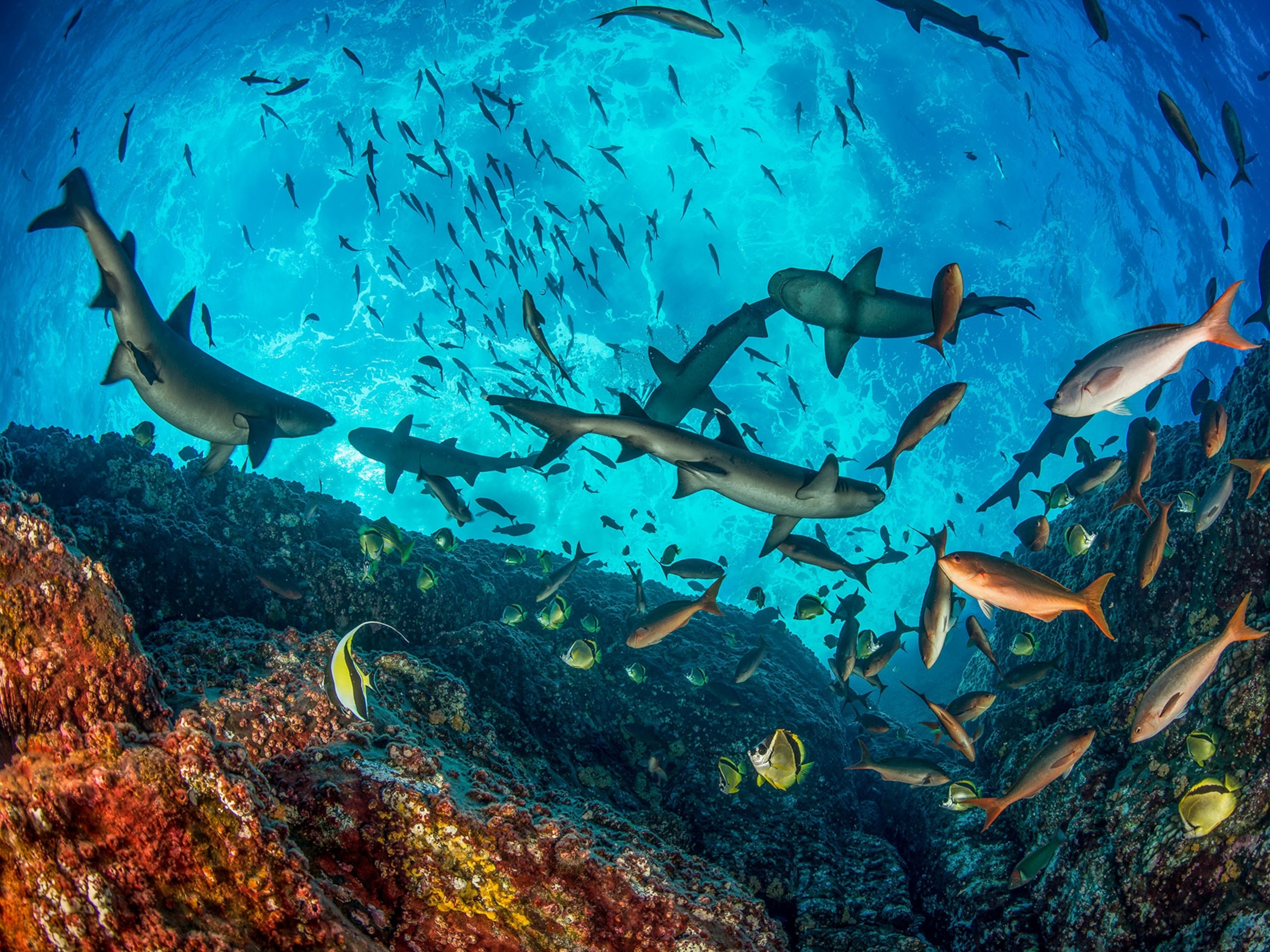Why cracking down on the shark fin trade may be easier than we thought
Many shark fins used in a traditional Asian delicacy come from the coastal waters of just a handful of countries. The finding upends conventional notions—and could make this conservation challenge easier to tackle.

Every year the fins of up to 73 million sharks, ranging from endangered species such as scalloped hammerhead sharks and broadfin sharks to more common species from sustainable fisheries, are traded and sold to make shark fin soup, a traditional Asian delicacy. A common perception is that much of the fin trade comes from sharks caught in distant international waters—where rules governing fishing are a little less clear and a lot harder to enforce, complicating conservation efforts.
But a new study, published today in the journal Biology Letters, upends that notion by concluding that many of the fins found in markets in Asia, North America, and South America come from sharks caught closer to shore—within the territorial waters of just a handful of countries. That proximity, they say, may make it easier to control the shark fin trade than previously thought.
“If sharks are caught within a country’s exclusive economic zone [EEZ] and not in international waters, that’s potentially good news, because what happens in an EEZ is within somebody’s control,” says Kyle Van Houtan, the chief scientist at the Monterey Bay Aquarium and lead author of the study. “It’s the sole responsibility of that one country.”

Van Houtan’s team used DNA analysis of samples taken from fins at fish markets combined with habitat modeling to pinpoint shark species and their origins.
“You can get a lot of insight about what species a shark fin comes from and where that shark lived, just by taking a small sample from an unlabeled fin in a market,” he says of improvements in DNA analysis, which has not only has gotten better at identifying species but also can match unique genetic signatures of samples to the known signatures of regional populations. “We’re finding a whole different group of coastal, rarer species in the shark fin trade that wouldn’t have been detectable using the older techniques.”
The research also found that many of the open-ocean species in the fin trade, such as blue sharks, thresher sharks, and oceanic white tip sharks, were likely caught within territorial waters, not in the open oceans, as expected. Van Houtan notes that while blue sharks are an open-ocean species, for example, they’re sometimes caught off a fishing pier not far from his office in Monterey, California.


“Every species has a preferred environment, a range of temperatures where they can survive, an optimal temperature where they can thrive, [and] extremes they avoid,” says Gabriel Reygondeau, a research associate at the University of British Columbia and the team’s habitat modeling expert. By combining knowledge of species’ preferred habitats with satellite data that measures where those conditions are found, the team predicted the most likely spots for a species.
The authors looked at more than 5,000 samples of shark fins from markets in Hong Kong, Vancouver, San Francisco, and Brazil’s northern coast. While the authors stress these samples are not meant to be a complete representation of the global trade, most fins they tested came from sharks caught in the territorial waters of just a few countries. This list includes some that are known for their shark fisheries, such as Indonesia, Japan, and Mexico, and some that surprised the authors: Australia and Brazil.
Diego Cardeñosa, a postdoctoral researcher at Florida International University who was not involved with this study, says that these results support a growing realization that it’s not just open-ocean shark species that are threatened but coastal species too. It also underscores the global nature of the trade.
The study findings and Cardeñosa’s own work on the genetic tracing of threatened shark species “highlight the need for stronger fisheries management in many regions around the world,” he said in an email. “The eastern Pacific [Mexico] is clearly a major source of CITES-listed shark species into Asian shark fin markets.”

CITES, the Convention on International Trade in Endangered Species of Wild Fauna and Flora, regulates the cross-border wildlife trade, and species on its list are those that the international community has agreed need stricter trade controls to prevent their numbers from dropping.
The conclusion that more sharks are caught in coastal areas offers hope in the sense that those fisheries can be more easily monitored and controlled than international waters. It could also mean that smaller boats, more numerous in coastal waters and harder to track than a handful of larger seagoing vessels, may play a more significant role.
“This study underscores key considerations for conservationists—that small-scale fisheries can have a significant impact on shark populations,” Sonja Fordham, president of the nonprofit Shark Advocates International, said by email. “Both national and international safeguards are needed to achieve sustainability.”
The biggest obstacle to shark conservation, she said, remains the lack of political will to restrict shark fishing to sustainable levels. “We need a lot more voices calling on decision-makers for concrete limits based on science and the precautionary approach—and demanding accountability.”





